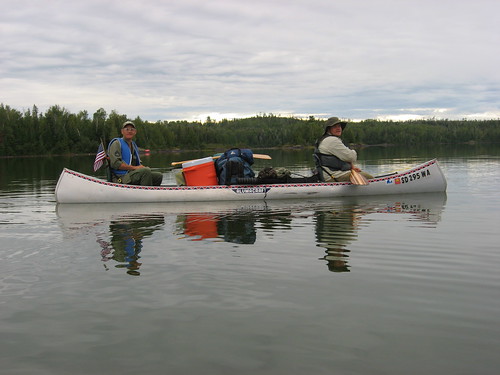
Losing a portion of our food to the bear could have caused complications for our planned six days in the BWCA. After all, it would have taken a full and demanding day to replenish our food stocks: an eight hour round-trip paddle, an hour drive round-trip into Ely, and then shopping for food items. It would have been an exhausting trip for the pair of paddlers who took on that task. But, luckily, there was enough food left to see us through without much of a problem.
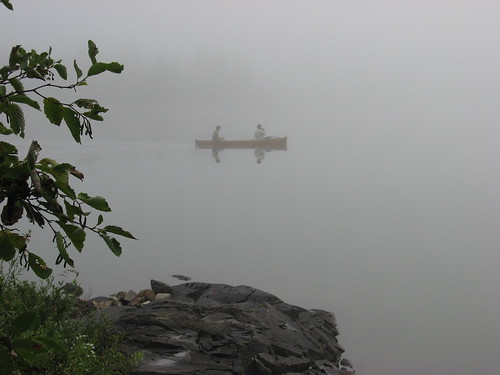
The best advice from the Forest Service when confronted with bear problems is to shift camps, and so we moved across Ensign Lake to another setting – actually, the preferred setting by the veteran members of our party.

Travel through the BWCAW is accomplished through multiple lakes connected by portage trails. These portages range from a “pull-over” offering relatively easy passage to long primitive rocky trails that wind up and down through heavily wooded hills.
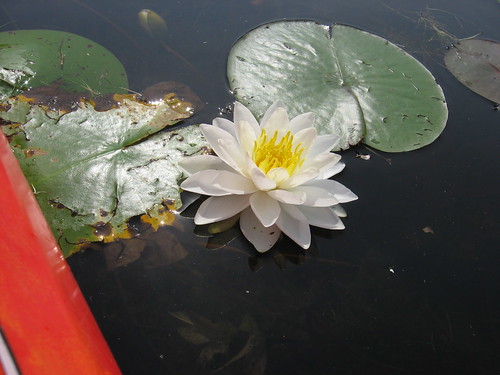
There are no reference marks in the area we traveled; paddlers use detailed maps carried in waterproof folios. The terrain looks pretty much the same throughout the lakes we traveled: a wall of green made up of coniferous trees mingled with birch trees, generally high banks, rocky shores and cliffs, and scattered islands. It looked to me as though it would be easy to become disoriented or even lost within this wilderness area. When paddling alone, I tried to remain my “situational awareness” so that I would not experience the anxiety of trying to find my way back when everything looked the same.
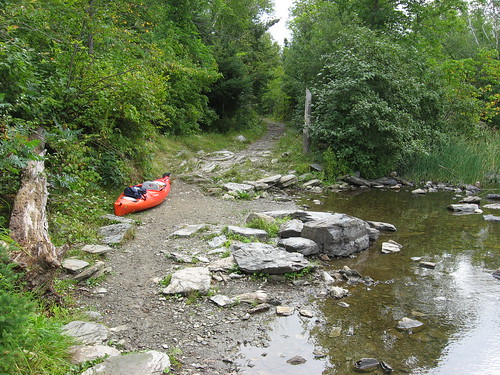
Most of the watercraft on the lakes were kevlar canoes that could be carried on the shoulders of a single person. The canoes within a party approach a portage, unload, and the paddlers carry their load across to the next put-in. A straight-line portage is not complicated nor particularly difficult; it just takes time to unload, carry across, and then repack the canoes. For portages that move up over steep rocky paths, however, it seems like an activity recommended by an orthopedic surgeon drumming up business.
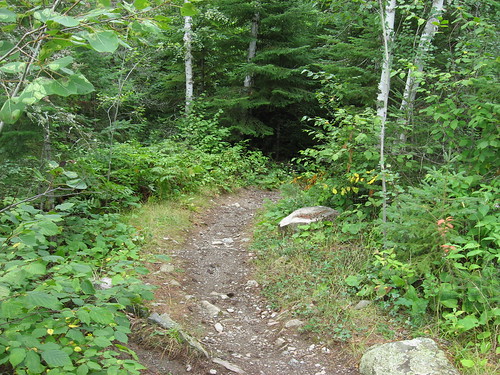
I saw only a few kayaks during this trip, and those only in areas with an easy portage path. My kayak weighs nearly twice that of a kevlar canoe, and it was a strain to portage even with two people. I think that only a body builder could muscle a kayak alone across even the relatively short portages.
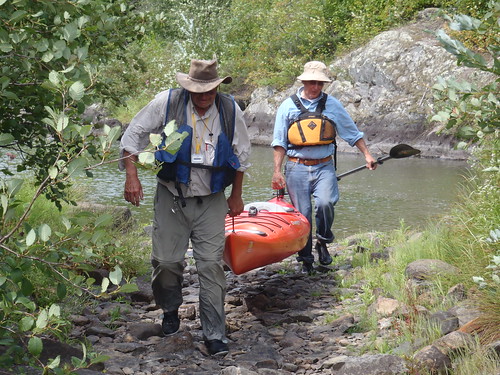
Portages in the BWCAW are measured in rods, an archaic linear unit that harkens back to 19th and early 20th century farming. A rod is equal to 16.5 feet, but I doubt that many people know that. To me, it seems like continued use of this unit of measurement is jargon that separates the old-timers from the novices. The use of meters, yards, or feet would provide greater comprehension for visitors. Who among us, I wonder, can visualize a passage of “180 rods.”
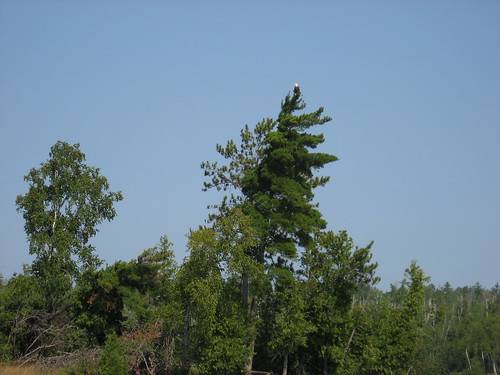
I saw several bald eagles on this trip, and some of them flew relatively low over the water just offshore from our camping site or near the canoes. In the closest encounters, I could clearly see their features.
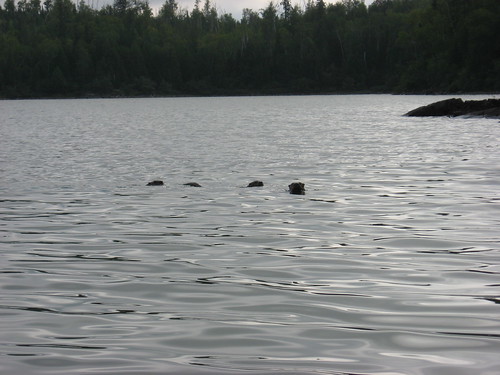
Luckily, I came across a group of four otters close inshore while out alone in my kayak. I was able to sit there quietly and watch them together for a few minutes.
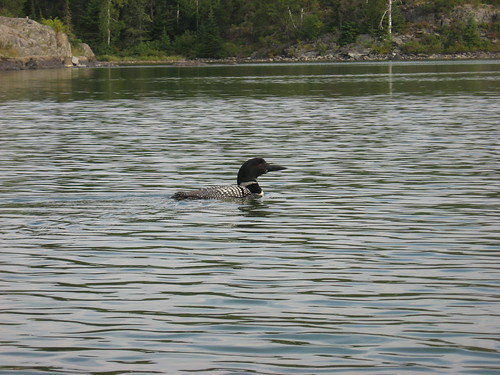
Loons were omnipresent, and I enjoyed moving close to them in my kayak to watch them diving and surfacing. The call of the loon was frequently heard during both the day and in the evening hours. I have heard so much about loons over the years, especially on Prairie Home Companion with Garrison Keillor, that I was really thrilled to actually watch them and listen to that distinct call. Loons seem to be an iconic aspect of life in Minnesota, and I feel enriched to have been able to see them in the BWCAW setting.

One evening we all watched a wolf move down the shoreline on Ensign Lake across from our base camp. Ensign has an exposed shoreline of about 2-4 feet, and the wolf was moving down that shoreline. We watched him for about 10 minutes through my binoculars. The distance was too great for me to capture a photograph with my limited camera; it just doesn’t have the telephoto quality needed for a recognizable image at that range. Our second campsite had a family of chipmunks that seemed fearless as they scavenged for any tidbit dropped or offered to them. In the campsite, I saw one dark brown rabbit. We came across a few garter snakes on portage trails or in the woods around the camp. Fortunately, we did not see the bear that visited our camp on that first night. I ran into someone who said that he saw a moose along the shore.
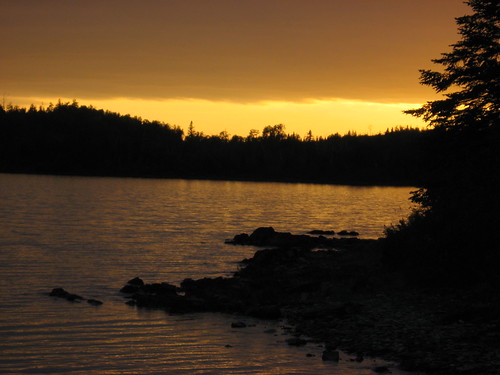
To be continued..........

No comments:
Post a Comment